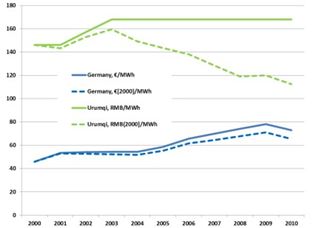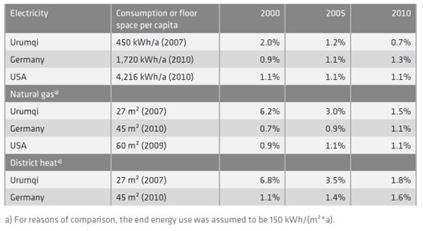 Task Group Energy
Task Group EnergyThe City of Urumqi (3.1 million people) is growing fast and is expected to be home to 4.8 million people by 2020. The gross floor area of residential and office buildings is expected to double to about 210 million m2 by 2034 due to the increase in population and the demand for larger residences. In 2013 alone, about 10 million m2 of new building area will be constructed, equivalent to half of the entire construction of apartments in Germany. For the heating of buildings more than 4 million tonnes of coal are burned per year accounting for a large share of the CO2 emissions and a major cause of air pollution in the very cold winters. In 2010 the City of Urumqi adopted an Integrated Heating and Building Energy Efficiency Master Plan envisaging investments of about 200 million € until 2015. The master plan includes key activities such as an investment plan to retrofit the energy efficiency of about 8.5 million m2 of existing buildings, increasing district heating (DH) efficiency for all centralized DH companies and implementing higher energy efficiency targets for the construction of new buildings.
In the year 2012, an ambitious investment program in converting heat plants from coal to natural gas took place. This has helped to improve Urumqi’s air quality but in turn has led to significant government subsidies for natural gas imported from Turkmenistan. The price to heat a home in Urumqi has decreased by 22% from 2000 to 2010 (inflation adjusted) and the pressure on a person’s pocketbook to heat his home has decreased from 6.8% to 1.8% of the average national salary. A further decrease of the energy prices is not recommended.
 |
 |
|
| Residential district heat prices (local currency) in Urumqi and Germany |
Energy prices in Urumqi, Germany and the US in per cent of the average national wage per year |